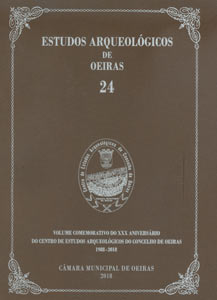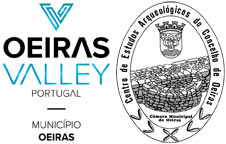Sobre a presença de lâminas de sílex oolítico (e outras matérias-primas exógenas) no povoado Calcolítico do Outeiro Redondo (Sesimbra, Portugal): interacção durante o 3.º milénio a.C. no Sudoeste Peninsular
Palavras-chave:
Chalcolithic, Long-distance trade, Oolitic flint, Outeiro Redondo, Rhyolite, Southwestern IberiaResumo
The development of extensive exchange networks during the 3rd millennium BC, established and strengthened by the consolidation of stable archaeo-metallurgical societies, has boosted the long-distance circulation of raw materials and artefacts whose provenance areas are sometimes located more than 200 km away from the site where they were ultimately used – thus being viewed as hyper-regional procurement/acquisition goods. The presence, in Chalcolithic contexts of the Portuguese Estremadura, of exogenous elements such as amber, ivory, variscite, and certain lithic raw materials used in the production of flaked stone and polished stone tools, indicates precisely the extent of these interaction diagrams, with diffusion routes covering vast geographic areas. Within the large and diversified set of the lithic industry from the Chalcolithic fortified settlement of Outeiro Redondo, located in the Western area of Setúbal peninsula (municipality of Sesimbra, Estremadura, Portugal) and occupied for most of the 3rd millennium BC, artefacts (exclusively large blades) were recognized whose macro-petrographic features indicate that they are elements produced using oolitic flint (to which one can associate the presence of other exogenous raw materials, such as rhyolite), mostly integrated in stratigraphic or structural contexts dated from the Middle Chalcolithic local chrono-zone (second half of the 3rd millennium BC). Such presence, coupled with the apparent absence of usable oolitic silicifications on the Jurassic formations of Western Iberia (but widely documented in Southern Spain, between the areas of Malaga and Granada), allows to integrate this site into those schemes of long-distance trade encompassing the whole Southwestern Iberia during the 3rd millennium BCE, as a recipient of items with an “exotic” character – although being debatable their “sumptuous consumption” as “prestige goods”, precisely on the basis of the evidence from Outeiro Redondo, where the elements show intense use-wear marks.
Downloads
Publicado
Como Citar
Edição
Secção
Licença
Os artigos publicados são da exclusiva responsabilidade dos Autores.
É expressamente proibida a reprodução de quaisquer imagens sobre as quais
existam direitos de autor sem o prévio consentimento dos signatários dos artigos
respectivos.




